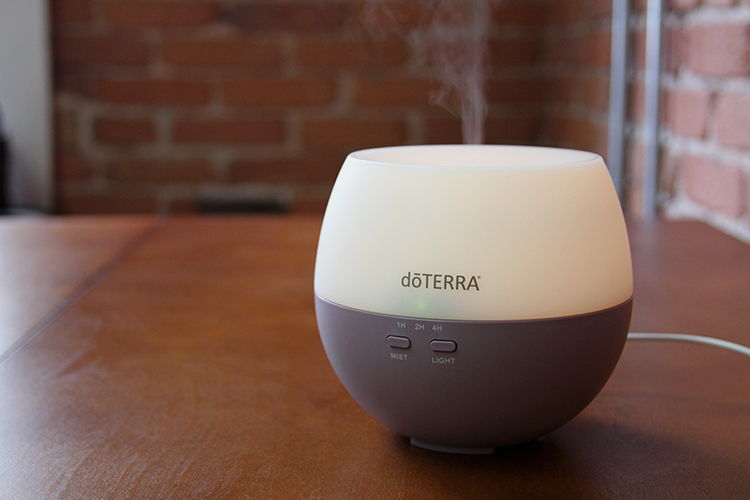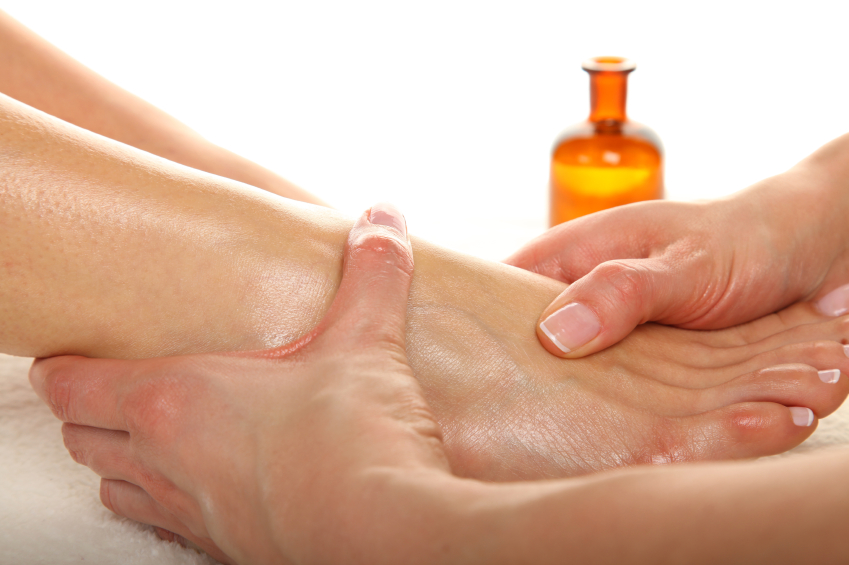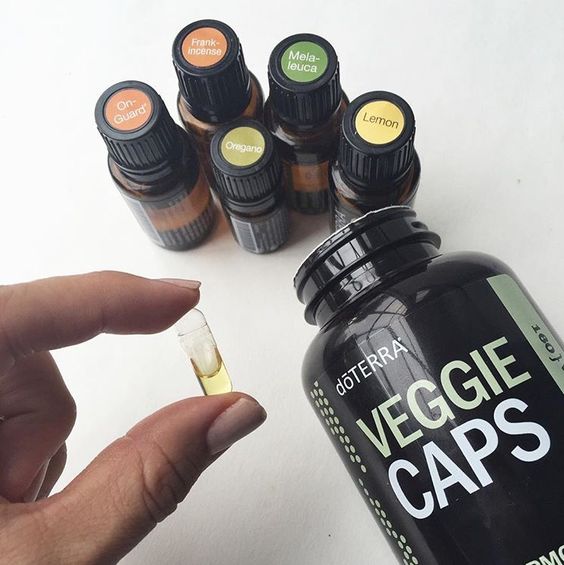1. Aromatically
 The sense of smell is a tool that can elicit powerful physiologic, mental and emotional responses. Essential oils are quickly absorbed by the smell receptors, which have a direct link to the limbic system by way of the olfactory nerve.
The sense of smell is a tool that can elicit powerful physiologic, mental and emotional responses. Essential oils are quickly absorbed by the smell receptors, which have a direct link to the limbic system by way of the olfactory nerve.
The limbic system is part of the brain that supports a variety of functions including smell, emotions, behavior and memory. For this reason, essential oils have an especially powerful effect via aromatic application.
Diffusion is one of the simplest methods for using essential oils aromatically.
You can also simply place a few drops of essential oil in the palm of your hand, cup it around your nose and breathe deeply.
Some essential oils induce uplifting or invigorating effects, while others are more calming.
Additional Aromatic Uses Include:
- • Apply oil to a cotton ball and place in the air vents of your vehicle
- • Mix oils in a spray bottle with water and mist over furniture, carpet, or linens
- • Add oil to a batch of laundry or to dryer sheets
- • Use in household surface cleaners
2. Topically
 Topical application is a very effective method for applying essential oils. They have low molecular weights and are lipid soluble so they easily penetrate the skin. Once absorbed, they stay in the applied area for a localized benefit.
Topical application is a very effective method for applying essential oils. They have low molecular weights and are lipid soluble so they easily penetrate the skin. Once absorbed, they stay in the applied area for a localized benefit.
To decrease the likelihood of developing a skin sensitivity, especially on young or sensitive skin, it is advisable to use a carrier oil (such as Fractionated Coconut Oil) to dilute more potent oils and when trying an oil for the first time. The recommended dilution ratio is typically one drop of essential oil to three drops of carrier oil.
It’s always advisable to use several small doses throughout the day rather than a single large dose. Start with the lowest possible dose (1–2 drops). A topical dose can be repeated every 4–6 hours as needed.
Because each of us is unique, the dose will vary based on size, age and overall health status.
Beneficial Areas You Can Apply Essential Oils
- • Back of neck
- • Forehead and temples
- • Chest and abdomen
- • Arms, legs, bottom of feet
- • Wrists and ankles
Other Effective Methods of Topical Application
- • Add a few drops of oil to a warm bath
- • Make a hot or cold compress by soaking a towel or cloth in water, adding essential oils and then applying to the desired area
- • Add oil to a lotion or moisturizer and then apply to skin
Sensitive Areas to be Avoided
- • Some facial areas, such as the skin around the eyes
- • Eyes and inner ears
- • Broken, damaged, or otherwise injured skin
3. Internally
 When in their concentrated form, essential oils can be used as dietary supplements for more targeted and potent health benefits.
When in their concentrated form, essential oils can be used as dietary supplements for more targeted and potent health benefits.
When ingested, essential oils directly enter the blood stream via the gastrointestinal tract, where they are transported throughout the rest of the body.
Essential oils are lipid soluble so they are readily transported to all organs of the body, including the brain. Like all things we consume, essential oils are metabolized by the liver and other organs and are then excreted.
Effective Methods of Internal Application
- • Use oils in recipes for cooking or baking to replace fresh or dried herbs and spices
- • Add essential oils to water, smoothies, milk, tea or other drinks
- • Take essential oils internally in a veggie capsule or add to a small amount of applesauce or yogurt
Proper dosing according to labeling recommendations and other professional guidelines should be strictly followed to avoid toxicity.
For more suggestions, read my post on 100 uses for the Home Essentials Kit.